voltage waveform of an incandescent lamp
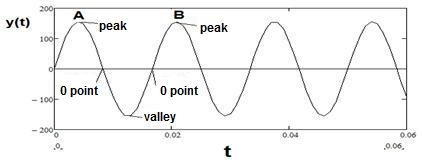
Incandescent lamp is the lamp which uses lamp filament to generate light Incandescent lamps use a 60Hz, 110v AC (alternating current) voltage as a power supply. When the voltage reaches the peaks, the light is at its brightest; when the voltage crosses the 0 point, the light is darkest. This varying brightness over time is exactly what flicker is.
voltage waveform of a fluorescent lamp
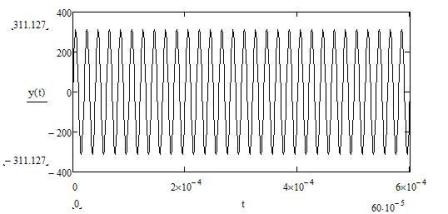
A fluorescent lamp generates light from collisions in a hot gas (‘plasma’) of free accelerated electrons with atoms - typically mercury - in which electrons are bumped up to higher energy levels and then fall back while emitting at two UV emission lines (254 nm and 185 nm). The thus created UV radiation is then converted into visible light by UV excitation of a fluorescent coating on the glass envelope of the lamp. The chemical composition of this coating is selected to emit in a desired spectrum. Fluorescent lamp with electronic ballast uses 110v AC voltage with frequency above 1 kilohertz, as a power supply, and similarly to the incandescent, when voltage reaches the peaks, the light is at its brightest and when the voltage crosses the 0, the light is darkest. By the same process, the conclusion is that flicker is likewise present in voltage waveform of a fluorescent lamp voltage sources.
voltage waveform of a LED lamp on the market on the left; voltage and current relation graph is on the right.

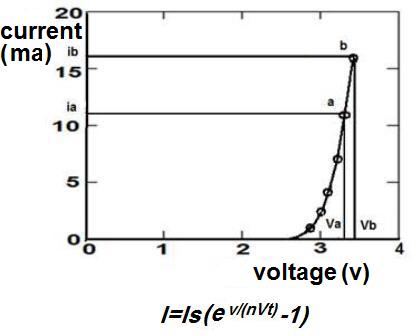
Some saying: “LED used DC voltage, so there is no flicker” correct? No LED lamps are slightly different, as they use a DC (direct current) voltage source rather than AC (alternate current). However, the current vs. voltage function for LED has an exponential relationship as in the right graph, meaning small voltage ripples (from Va to Vb) will cause a huge, fast change in current (from Ia to Ib). The brightness of the LED is dependent on its power, which is defined by the expression P=IV (I=current, V=voltage). (IbxVb is much larger than IaxVa, so brightness of point b is much larger than brightness of point a) Because the current and power are proportional for voltage is almost the same, a instant change in current results in a instant change in power, which ultimately changes the brightness. Voltage ripples occur frequently, which then causes the brightness to fluctuate, therefore LED lights have flicker as well. Horizontal axis is the voltage across the LED (volt); vertical axis is the current through the LED (mA), as shown, a small voltage variation (from Va to Vb) causes a huge current variation from (ia to ib), and current is what controls the brightness of light.
voltage waveform of display screen on laptop, notepad or cell phone
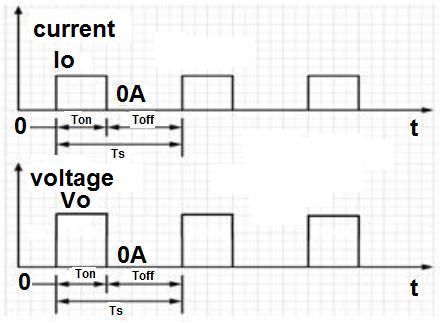
The electronic displays of phones, notebooks, computers, tablets and TVs all use PWM (pulse width modulation) to dim brightness. High frequency pulses of voltage and current will result in light variation, which introduces yet again, the flicker problem.
test result of our lamp from national light test center
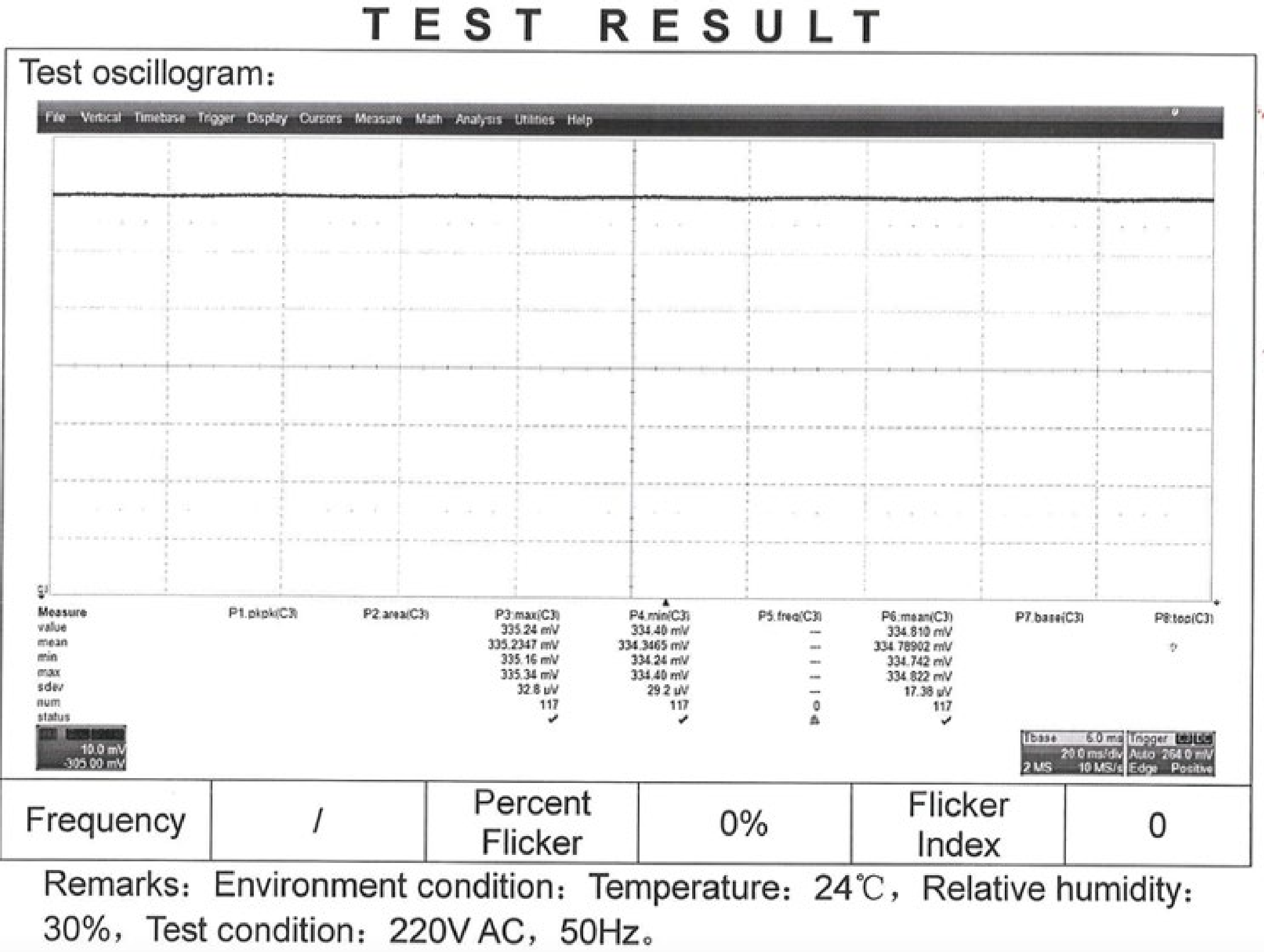
percent flicker=0% and flicker index=0, those proved our lamp is absolutely flicker free.
Increase frequency will reduce eyestrain to prevent myopia?
low frequency 60Hz waveform and high frequency 1260Hz waveform
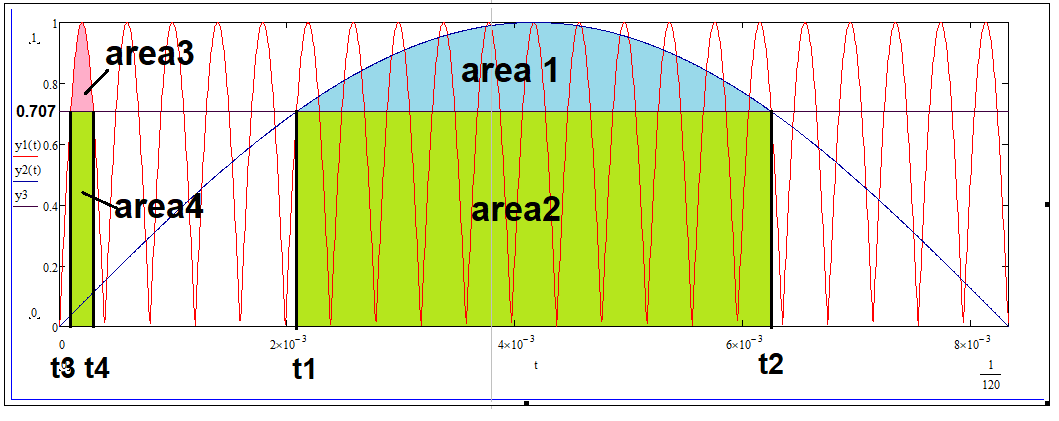
Pupils will contract at bright light and will dilate at dim light. There is a specific pupil open area corresponding to the specific light brightness. For a sinusoidal flicker with peak magnitude 1, regular pupil open area corresponding to the effective value of the sinusoidal flicker is 0.707. area above 0.707 is defined as uncomfortable area. When the accumulated uncomfortable area is above a threshold, the pupil will shut once. For flicker, we need to consider the absolute value of sinusoidal waveform. In the figure above, the Blue area 1 is uncomfortable area for 60 Hz flicker, the Purple area 3 is uncomfortable area for 1260Hz. The pupil will shut every time when the accumulated uncomfortable area is above the threshold which result in eyestrain after many times of pupil shut

from time 0 to 1/120, there are 21 of area 3, there is only one area 1, 21xarea3=1xarea1, even frequency is increased from 60Herts to 1260 Herts, the uncomfortable area is the same during the same period. The uncomfortable area is above a threshold, the pupil will shut once. So no matter low frequency or high frequency flicker, the pupil will shut with same numbers. Increasing frequency will not reduce the eyestrain.
test result of our lamp from national light test center

percent flicker=0% and flicker index=0, those proved our lamp is absolutely flicker free.